The Palazzo Pitti
Palazzo Pitti is located in piazza Pitti, which can be reached from the Duomo (cathedral) by taking via Roma and the streets that run parallel to it, via Calimala and via Por Santa Maria. Cross the Ponte Vecchio to reach Piazza Pitti by taking via de' Guicciardini.
Address: 1 Piazza Pitti
Opening hours: daily from 8:15 am to 6:50 pm. Closed on Mondays.
Price : From March to October : 16€, from November to February : 10€.
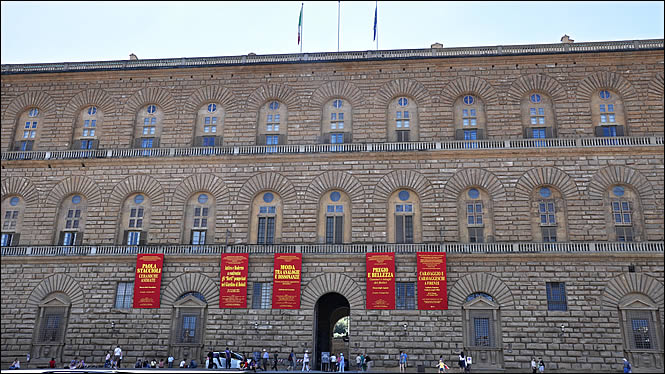 |
The original building was built from 1457 to 1466 on plans by Brunelleschi for the banker Luca Pitti. Cosimo I bought the palace in 1569, at the request of his wife Eleanor of Toledo, who was in poor health and hoped to find better air in the palace, which was located outside the city at the time. The palace was then extended according to the plans of Bartolomeo Ammanati. The fašade of the palace was extended by another 250 meters in the 17th century. The Pitti Palace was the residence of the Medici and Lorraine families.
After the reunification of Italy in 1860, it became the residence of Victor Emmanuel II until 1870. In 1919 he donated it to the State. There are no less than 6 museums inside the palace and in the gardens. It is impossible to visit all of them and, moreover, only 3 are really worth a visit.
Palatine Gallery
The collection of paintings occupies about twenty rooms decorated with frescoes and stuccos in trompe l'oeil. Some of the works on display are worthy of the Uffizi Gallery, but due to lack of space, they have remained in situ.
Room of Prometheus - tondo of the Virgin and Child by Filippo Lippi
Hall of Justice - portrait of Tommaso Mosti, by Titian
Hall of Ulysses - the Madonna of the Impannata by Raphael
Hall of Saturn - Madonna of the Chair and Madonna of the Grand Duke by Raphael
Room of Jupiter - by the same Raphael, the Woman with a veil, called the Fornarina
Room of Venus - the Venus, known as the Italic, which is in this room is by the sculptor Canova.
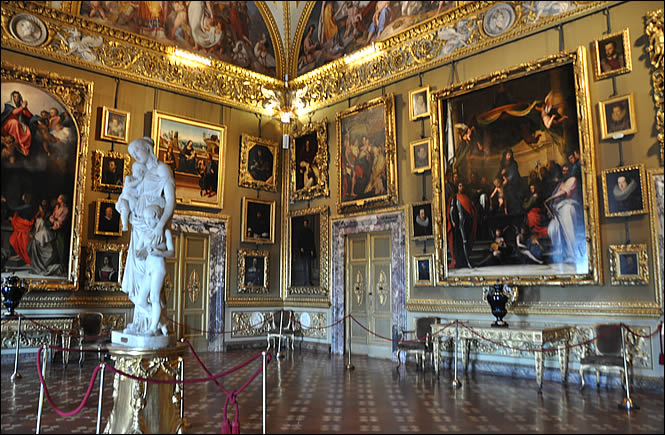 |
Museum of Silverware
The decoration of the rooms alone is worth a visit. The paintings on the walls and ceilings are in the illusionist style (trompe l'oeil) in favor in the 17th century. More than just silverware, the museum exhibits handcrafted art treasures, such as hard stone vases, inlaid furniture, cameos, jewelry and ivories.
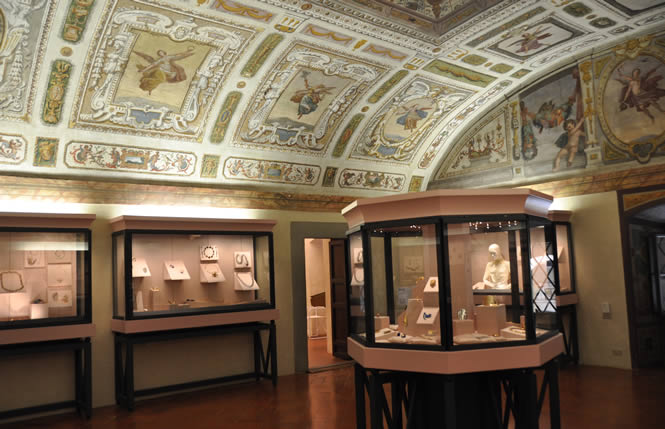 |
Royal Apartments
Each dynasty left its mark in richly furnished and decorated rooms, mainly in the neo-baroque style.
Boboli Garden
This vast park bears the name of its former owner. It was begun in 1550 and redesigned over the centuries for the pleasure of the Court, and opened to the public in 1766. It is a magnificent example of an Italian garden. The amphitheater, inaugurated in 1637, is decorated with an Egyptian obelisk and Roman statues. The basin of Neptune is just above. The fountain of Bacchus represents the dwarf of Cosmo I, sitting on a tortoise. An alley of cypresses or viottolone, lined with sculptures leads to the piazzale dell' Isolotto. In the middle of the basin, the fountain of the Ocean is by Giambologna. |
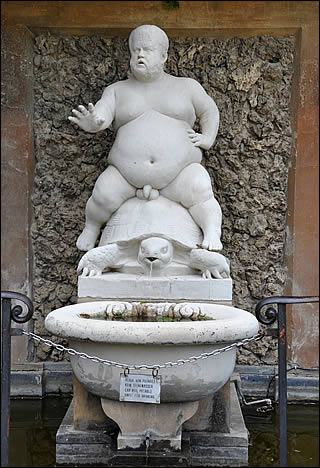 |
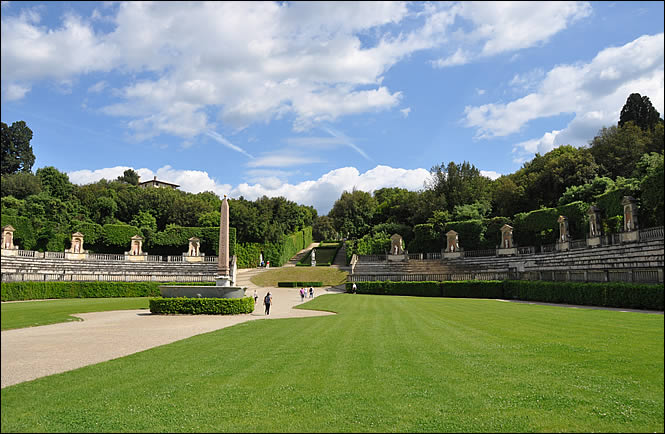 |
The cave of Buontalenti
The three rooms present at the entrance the cast of the slaves by Michelangelo, and in the other two rooms, the Venus by Giambologna and the group of Paris and Helen by Vicenzo Rossi. Frescoes and artificial concretions cover the walls and the vaults.
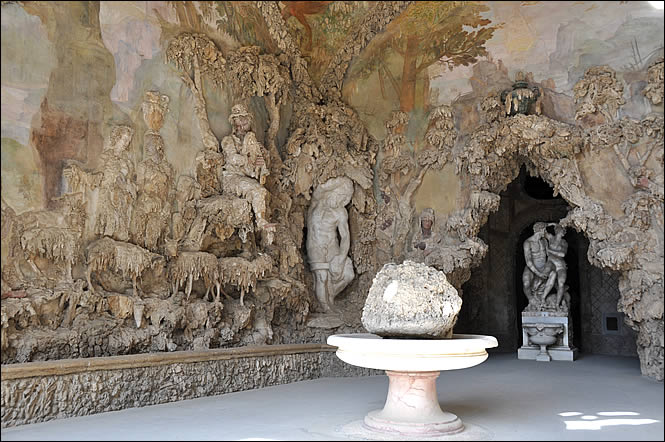 |